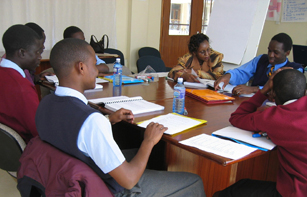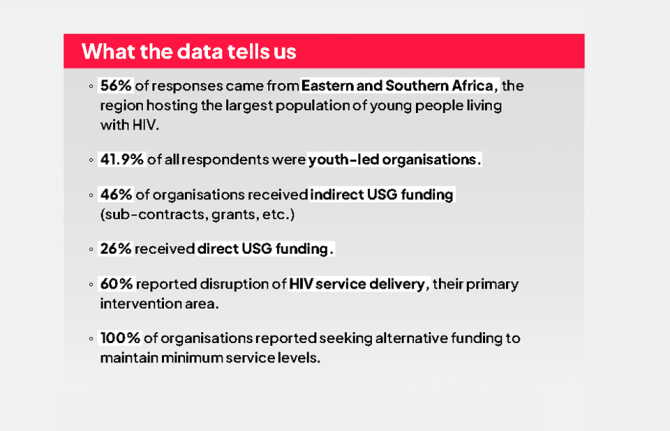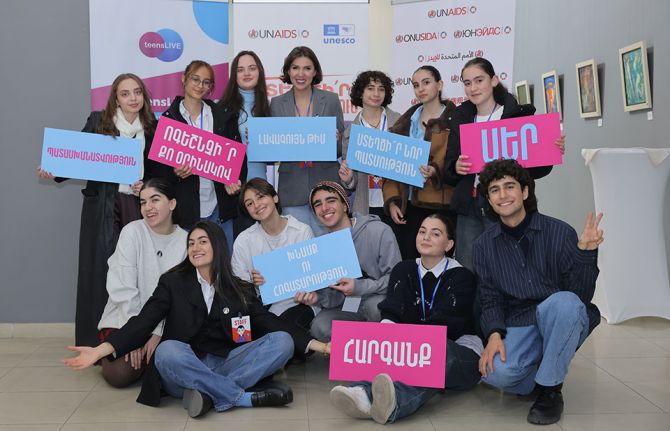
Feature Story
UNESCO: Sexuality education for young people highly cost-effective
06 May 2011
06 May 2011 06 May 2011
Students working with the Kenya government officials on sexuality education
Credit: UNESCO/Kenyan Centre for the Study of Adolescence
Sexuality education programmes can be highly cost-effective, especially when compulsory, adapted from existing models and integrated into the mainstream school curriculum. This is the major conclusion emerging from a seminal study released by UNESCO during a meeting of the UNAIDS Inter-Agency Task Team on Education in New York on 27 April 2011.
The study, Cost and cost-effectiveness: Analysis of school-based sexuality education programmes in six countries, examines a range of programmes in Estonia, India, Indonesia, Kenya, the Netherlands and Nigeria. It highlights significant cost savings in a number of settings. It also shows that compulsory programmes are more cost-effective as they reap the benefits and greater impact of full coverage of the student population.
For example, in Estonia a national sexuality education programme was introduced and linked with accessible, youth-friendly sexual and reproductive health services. Between 2001 and 2009 some 13 490 ‘health events’ were averted in the country, including nearly 2 000 HIV infections, at a potential lifetime cost of US$ 67 825 per patient, approximately 4 300 unintended pregnancies and more than 7 000 sexually transmitted infections.
We now have the data and analysis to make a stronger and better informed case for investing in school-based sexuality education programmes, particularly in those countries most affected by the epidemic and prioritized for attention in the new UNAIDS Strategy 2011-2015
Mark Richmond, UNESCO’s Global Coordinator for HIV and AIDS
The report also provides a detailed breakdown of the costs per learner of each completed sexuality education curriculum in the six countries. This ranges from US$ 6.90 in Nigeria to US$ 32.80 in the Netherlands. There are significantly higher costs in smaller pilot programmes, such as Kenya and Indonesia.
According to Mark Richmond, UNESCO’s Global Coordinator for HIV and AIDS, the landmark study gives an economic basis to the argument that sexuality education provides a key platform for HIV prevention amongst young people.
“We now have the data and analysis to make a stronger and better informed case for investing in school-based sexuality education programmes, particularly in those countries most affected by the epidemic and prioritized for attention in the new UNAIDS Strategy 2011-2015.”
Reducing the sexual transmission of HIV by half by 2015, including among young people, is one of the goals of the UNAIDS Strategy. However, the 2010 UNAIDS global report shows a critical gap in comprehensive prevention knowledge about HIV amongst this age group and that about 40% of all new HIV infections among adults occur among young people aged 15-24. Cost and cost-effectiveness adds to the growing recognition that school-based sexuality education has the potential to play a key role in improving young people’s knowledge for HIV prevention.
Inter-Agency Task Team on Education
Formed in 2002, the Inter-Agency Task Team on Education is convened by UNESCO and brings together UNAIDS Cosponsors, bilateral agencies, private donors and civil society partners to accelerate and improve a coordinated and harmonized education sector response to HIV.
External links
External links
Related
 “Who will protect our young people?”
“Who will protect our young people?”

02 June 2025


